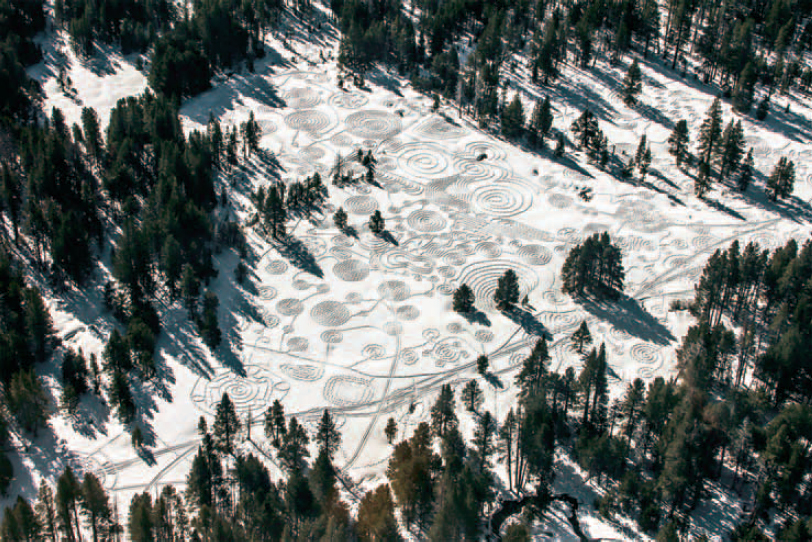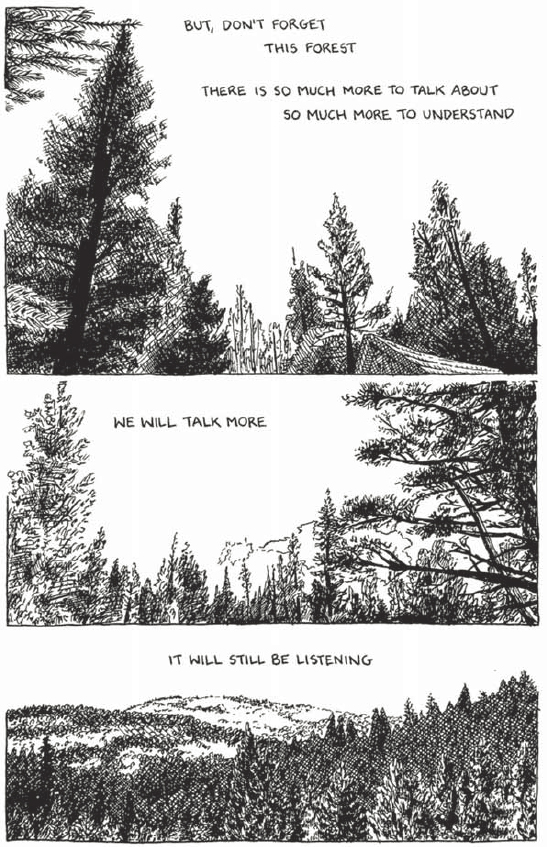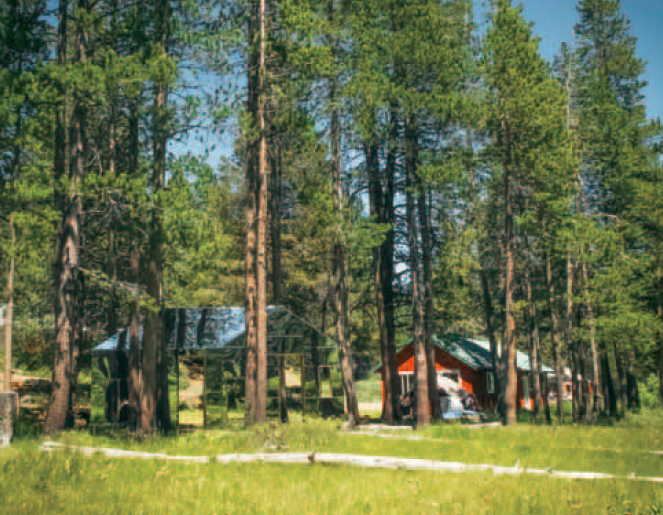Art That Walks in the World
By William L. Fox
Director, Center for Art + Environment, Nevada Museum of Art, Reno
I don’t think anyone really knows how many artist residency programs exist in the United States, much less internationally. The National Endowment for the Arts thinks that there are at least 500 “artists’ communities” in the country, organizations devoted to providing work and living spaces for visiting artists, but that’s a small subset of residencies when you include those that exist in other institutions, such as universities. Residencies at science facilities are far rarer, however, and range from the highly organized international residency program at CERN in Switzerland to the very informal ArtSciConverge program at the University of California, Berkeley’s Sagehen Creek Field Station. But by far the majority of residencies, whether at an artist community or a field station, have one thing in common: they are place-based.
A place-based art practice means that you are concerned not only with art itself as a way of exploring intellectual, philosophical, and aesthetic issues, but also with how art functions and is understood in relationship to a specific space and time, a location. Within science contexts, that interest can range from Linda Connor printing fine art photographs from early 20th-century glass photographic plates at the Lick Observatory near San Jose, California, to a sculptor working on the Ross Ice Shelf as part of the National Science Foundation’s Antarctic Artists and Writers Program.
By definition, place-based programs are unique. Sagehen’s is no exception. The progenitive figures for place-making through art at Sagehen were Helen Mayer Harrison (1927–2018) and Newton Harrison (b. 1932), the world-renowned couple who are often credited with the rise of eco-art in North America. The Nevada Museum of Art in Reno commissioned them to do a conceptual piece about the Sierra Nevada in 1998 for an exhibition about the 400-mile-long mountain range. Typical of their practice, they first made a series of maps about the nature of the range and then met with numerous stakeholders to learn about the environmental health of the range. What they discovered was the importance of clean snowmelt runoff from the mountains to the agricultural industry of California’s Central Valley. The maps, their discoveries, and their proposals, written out as a long poem, formed the artwork titled Sierra Nevada: A Modest Proposal.
When the Center for Art + Environment at the Nevada Museum of Art opened in January 2009, we decided to contact the Harrisons to see if they would like to pick up where that first proposal had ended, and to undertake a specific work in the mountains. That led to an invitation from Jeff Brown and Faerthen Felix, respectively the Director and Manager of Sagehen, for the Harrisons to place a series of five test plots at varying elevations in the valley. Each plot would consist of both a control sample of untouched existing vegetation and an adjacent ensemble of plants within the valley’s existing genome designed to be resilient
to climate change. As the Sierra warms, species are moving progressively higher in elevation only to disappear entirely, and then to be replaced with new plants susceptible to fire and consequent soil degradation. The Harrisons’s ensembles would test plant species beneficial to helping control erosion and preserve water quality, while at the same time limit the spread of catastrophic fires.
Both the Museum in Reno and Ronald Feldman Gallery in New York City exhibited their Sagehen work, and it was reviewed widely and positively in the art world in late 2011. This new work was first titled Sierra Nevada: An Adaptation and, as the project materialized on the ground, it became Sagehen: A Proving Ground. The latter title acknowledged that Sagehen would inspire an entire series of new Harrison projects dealing with water in California and Nevada. But it is also useful as a rubric to mark the beginning of what would be a wide-ranging artist residency program.
The Harrisons’s work was often mistaken for a science project, but in fact, their proposals have deep metaphorical resonance with regional Native American mythology, with the legends of settler culture, and contemporary politics, as well as with contemporary art practices. All of that arises from research steeped in place-making. Brown and Felix decided they would continue inviting artists to work at Sagehen, as well as with its collaboration with the Center for Art + Environment. Nowhere is the goal of the station’s art program formalized as a way to continually engage artists in place-based work, although that is the underlying goal. The exhibition Sagehen: A Sierra Proving Ground presents a selection of the resident artists’ work from 2011 through 2020.
The first project created after the Harrisons planted their plots was by the American and Korean firm of stpmj architects, who built a thought experiment at

Sonja Hinrichsen, Snowshoe Drawing at Sagehen Creek Field Station, photographed by Faerthen Felix, 2016.
Snowshoe Drawing by German artist Sonja Hinrichsen is one of several community participatory works she has directed around the world. People from the town of Truckee near the field station imprinted her design while walking on snowshoes, thus temporarily altering the landscape. The result was an ephemeral place-based drawing, an action that provided the participants with a way to meditate and play with the environment without causing any damage.

Christopher Baldwin, Sagehen Creek Field Station, 2017
Pen and ink on paper
9 x 12 inches
the station. Invisible Barn was conceived as a folly similar to the follies built by the Europeans in the 19th century—interventions in landscapes meant to provide places for reflection, places that were interactive and fun. But stpmj’s folly, Invisible Barn, was literally made of a reflective material stretched over a radically flattened wooden frame of a small building. Pierced by rectangular openings referencing windows, the sculpture was meant to be both seen through and not. You would see the forest in front of you through the openings, and then the forest beyond you as mirrored on the “building.” It was about the place and of the place at the same time, and it quickly became a place where people chose to meet, converse, and contemplate.
The Center for Art + Environment then recommended that nomadic artists Cedra Wood and Christopher Baldwin visit Sagehen for an extended visit. They are artists whose practices include—but are not limited to—making work about the places in which they find themselves in residence. Wood collected pine cone scales from Sagehen, which she sewed together into a large cloak that she wore in the forest while walking among burning slash piles, a performance documented by her partner, the artist Christopher Baldwin. His photographs led to subsequent paintings and drawings by Wood. Her “forest spirit” works then inspired the creation by others of “fire sprites” (not included in the exhibition) that are part of an ongoing art project about fire.
Baldwin, an internationally prominent comics artist and writer, also collaborated with Wood to reinterpret Sagehen fieldwork and professional research papers as graphic narratives, and a comic strip that also poetically described life at the station itself. Their reflections, which capture the richness of science produced at Sagehen over decades, as well as life at the station, memorialize not just facts and figures but also the reverence in which people hold both the field station and its landscape.
The relief prints by Barbara Foster, made by walking in the forest on locally sourced white fir planks attached to her shoes, are also based on a performance, that of her walking. The planks were scored by the ground she walked on, making a plate from which the prints were pulled. They are literal impressions of place.
Nate Reifke hiked the Sagehen Valley, selecting rocks to inscribe with tribal designs that he then tucked into the landscape. Their almost invisible locations were keyed on a map designed and produced by Reifke and posted at the station. Searching for the rocks becomes a collaborative performance among the artist and the audience. In essence, he made a navigational puzzle for his audience that brings people closer to the land.
A different kind of walking performance was directed in the winter of 2016 by the German artist Sonja Hinrichsen. Snowshoe Drawing, which people from the nearby town of Truckee were invited to create, is one of a number of community participatory works she has directed around the world. Local people imprinted her design while walking on snowshoes and thus altering the landscape. The result

stpmj Architects, Invisible Barn
Photographed by Faerthen Felix, 2015, at Sagehen Creek Field Station
was an ephemeral place-based drawing, an action that provided them a way to meditate and play with the environment without causing any damage.
British artist Stuart Ian Frost, another Center for Art + Environment recommendation, worked with local loggers to slice a length of pine tree trunk into “cookies.” He reassembled them into two trees, a metaphorical cloning of a tree standing in the midst of the Sagehen forest. The sculpture addresses how the replanting of trees in the valley following a fire inadvertently created a monoculture of vegetation that is now itself prone to an increased risk of fire. This is a widespread practice that Sagehen seeks to change.
Erika Osborne’s paintings reimagine history and place through everything from seemingly traditional sublime landscape paintings to experimental cartography. Often an underlying contemporary environmental disaster is present in the images. After her residency at Sagehen she had a lengthy residency within the forests of Mexico’s Sierra de la Laguna and Sierra de San Pedro Mártir National Park. These forests provided reference conditions for Sagehen forest science and management projects. Her two works here utilize small plastic viewfinders to focus the attention of viewers as if they were surveying the landscapes. She contrasts the highly managed, dense forests at Sagehen with the forest in the Sierra de la Laguna, which has been largely left alone, and is quite healthy. The titles of the works also reference the fact that the Sierra de la Laguna was once a small island and that the forests of the western United States are “vast … and even in their most remote places, not all that isolated.” Osborne thus connects Sagehen within a larger framework of place, that of sister forests around the world.
These selected projects represent the manifold ways in which the arts transform Sagehen as a space of science into a place we know and care about. The station’s art program shifts the perceptions of people visiting and working in Sagehen, but also attracts new audiences. The results are an increase in positive media attention, and deeper connections with nearby communities. These changes, in turn, increase the station’s ability to take information generated by scientists into the realms of public awareness and policy action.




